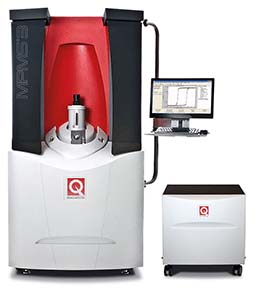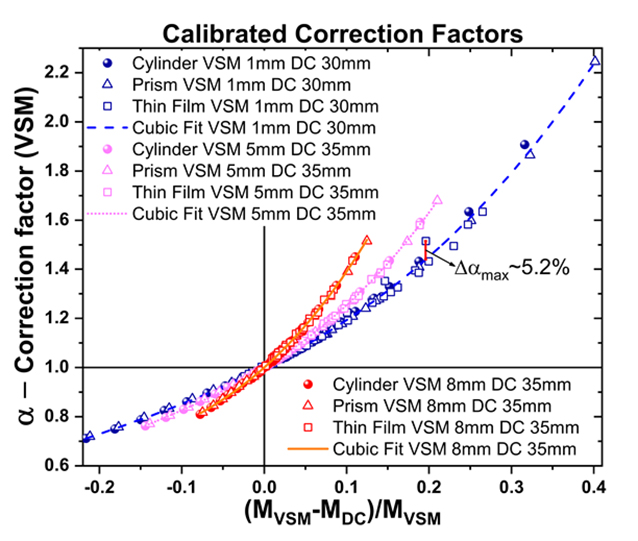VSM measurements – Measuring magnetic moments independent of sample geometry
The most common method to determine the magnetic moment of a material is the vibrating sample magnetometer. When using this method, the sample vibrates in a gradiometer, usually with a magnetic field applied. The system measures the current induced in the gradiometer and on this basis calculates the magnetic dipole moment. Since the coupling between sample and gradiometer depends on the geometry of the sample, this calculation involves a geometry-dependent error, which is also influenced by the amplitude of the sample movement. The larger the sample is relative to the volume of the gradiometer, the larger the error. For some geometries, it may amount to 10% plus. Correcting this deviation is not an easy task, in particular if irregular sample geometries are concerned. But even with common shapes such as cylinders or cubes, this is not at all trivial, since not only the shape of the specimen itself, but also its radial offset from the centre of the gradiometer plays its part in this calculation.
The usual way to remove the geometry portion is to apply a correction factor. In Quantum Design's MPMS3 SQUID magnetometer, this can be calculated e.g. by the software, provided that the geometry (cylinder, cuboid, thin film), the dimensions and the radial offset are known. In practice, measuring these parameters, in particular the radial offset, is quite difficult.
The research group led by Prof. Amaral of the University of Aveiro in Portugal has recently published a method that allows magnetic measurements that do not depend on the geometry [1]. This method combines VSM with DC-scan measurements. The latter work similarly to a VSM. But in contrast to a VSM, in a DC-scan measurement the sample is simply pulled through the gradiometer once instead of making it vibrate with a sine wave. For each pair of VSM amplitude and DC-scan length, there is a defined correction function α(x), where x describes the ratio of the VSM measurement MVSM to the DC measurement MDC: x = (MVSM - MDC)/MVSM. If both measurement values are known, it is easy to correct the magnetic-moment result. This so-called GICM (geometry-independent correction method) is independent of field strength, temperature, radial offset and geometry.
In the MPMS3, VSM and DC measurement can be performed consecutively without having to change the hardware.
[1] C O Amorim et al 2021 Meas. Sci. Technol. 32 105602





